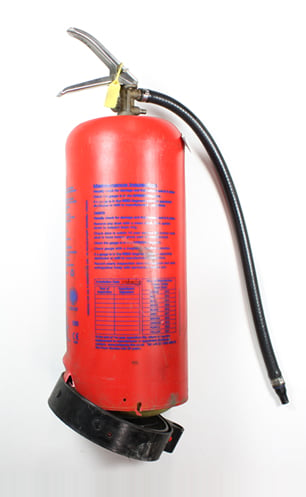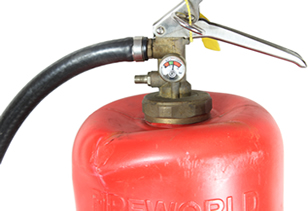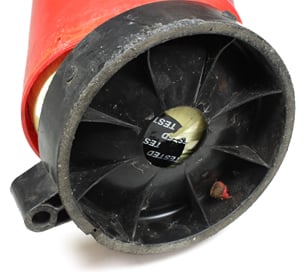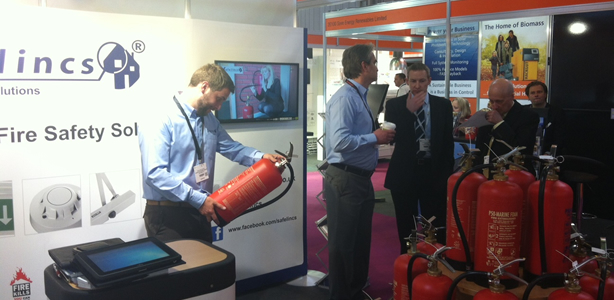Tuesday 3rd January 2017
Interlinked smoke alarms are becoming more and more popular as they quickly alert you to the event of a fire across larger houses, where there is a risk that you might not hear an alarm going off in the kitchen when you are, for example, in a bedroom upstairs.
Whether connected to each other with wire or wirelessly interlinked through radio frequency, interlinked smoke alarms allow you to connect multiple units – including different types of detectors – which will all sound at the same time when a single alarm detects a potential fire. The heat alarm in the kitchen, the ionisation alarm in your home office, and the specialist strobe and vibration alarm in your elderly parents’ bedroom, for example, will all go off at the same time, if just one alarm is triggered by fire.
Most of us are familiar with the test button on smoke alarms which allows residents to test their alarms regularly, to ensure the components are working and the power supply, whether battery or mains power, is working. On top of this, however, many alarms have a “hush” button which allows you to silence an alarm that has gone off, for example, due to burnt toast.
So how do hush buttons work when you have several interlinked alarms?
It’s easy to assume that, as they are all connected, hushing one alarm will silence all of them, but it is equally logical that only the unit on which you pressed the hush button should be silenced – after all, you don’t want people to assume it was a false alarm if there really is a fire raging downstairs.
Interestingly, not all interconnecting smoke alarms hush in the same way. Here is an overview explaining the different approaches employed by the three main smoke alarm manufacturers in the UK.
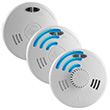 For Kidde smoke alarms, the originating alarm (the unit which detected a potential fire and triggered all of your units) will have its warning light flash faster than all other units while the alarm is sounding – enabling you to identify the smoke alarm that caused the alarm. Pressing the hush button on ANY unit will silence the ENTIRE network.
For Kidde smoke alarms, the originating alarm (the unit which detected a potential fire and triggered all of your units) will have its warning light flash faster than all other units while the alarm is sounding – enabling you to identify the smoke alarm that caused the alarm. Pressing the hush button on ANY unit will silence the ENTIRE network.
 If you have interlinking Ei Electronics smoke alarms, only the originating unit’s hush button will be able to silence the ENTIRE network. The other units in the circuit can be individually silenced. To identify the originating unit you need to look for the alarm whose warning light is flashing every second, compared to every 40 or so seconds on the other units.
If you have interlinking Ei Electronics smoke alarms, only the originating unit’s hush button will be able to silence the ENTIRE network. The other units in the circuit can be individually silenced. To identify the originating unit you need to look for the alarm whose warning light is flashing every second, compared to every 40 or so seconds on the other units.
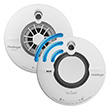 FireAngel smoke alarms, however, deploy an improved silencing protocol. If you hush the originating smoke alarm then, as with the other brands, ALL connected units will be silenced. However, if you hush any other unit, the ORIGINATING alarm will continue to sound but ALL OTHER units will be silenced. This allows you to quickly identify the originating alarm which is very helpful both in case of a false alarm or a real emergency.
FireAngel smoke alarms, however, deploy an improved silencing protocol. If you hush the originating smoke alarm then, as with the other brands, ALL connected units will be silenced. However, if you hush any other unit, the ORIGINATING alarm will continue to sound but ALL OTHER units will be silenced. This allows you to quickly identify the originating alarm which is very helpful both in case of a false alarm or a real emergency.
If you require support selecting the best smoke alarm system for yourself, please contact the friendly Safelincs support team either by emailing support@safelincs.co.uk or by ringing 0800 612 6537




 There is
There is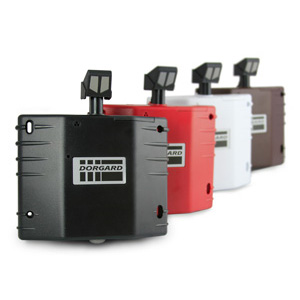 Fire safety company Safelincs operates a website called
Fire safety company Safelincs operates a website called 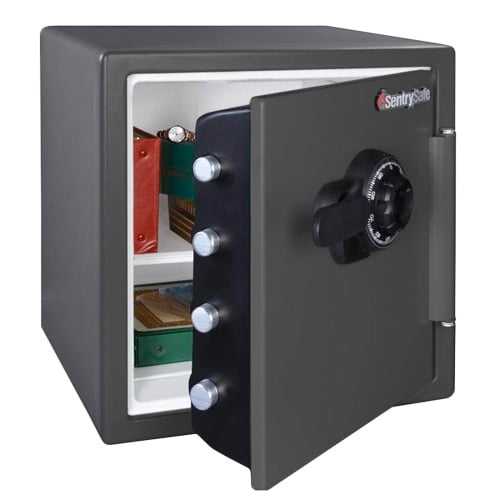 A recent fire at the National Archives in Kew, home to some of the UK’s most important historical documents, was tackled by 20 firefighters. The blaze was caused by two disused water towers at the site in Richmond, South-West London.
A recent fire at the National Archives in Kew, home to some of the UK’s most important historical documents, was tackled by 20 firefighters. The blaze was caused by two disused water towers at the site in Richmond, South-West London. Safelincs supplies Handelsbanken, a leading Swedish Bank with over 700 branches in 24 countries, 147 branches of which are in the UK, with fire safety products such as fire extinguishers. Purchasing fire extinguishers from Safelincs gives Handelsbanken full protection. Should the extinguishers ever be used, Safelincs will immediately replace the extinguishers. So, when on the 21st of October a
Safelincs supplies Handelsbanken, a leading Swedish Bank with over 700 branches in 24 countries, 147 branches of which are in the UK, with fire safety products such as fire extinguishers. Purchasing fire extinguishers from Safelincs gives Handelsbanken full protection. Should the extinguishers ever be used, Safelincs will immediately replace the extinguishers. So, when on the 21st of October a 